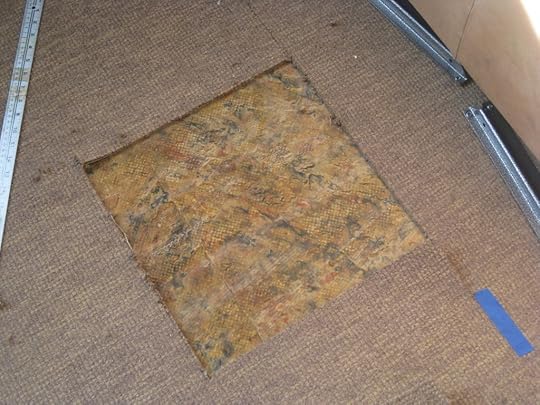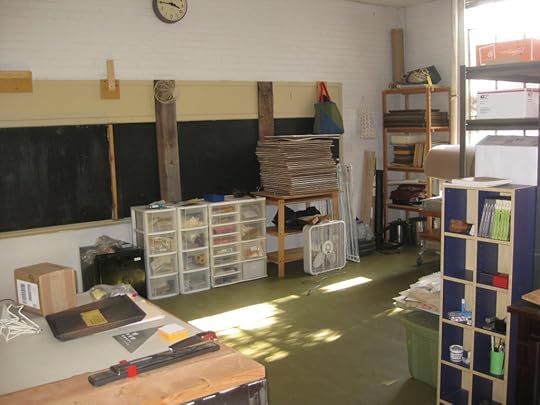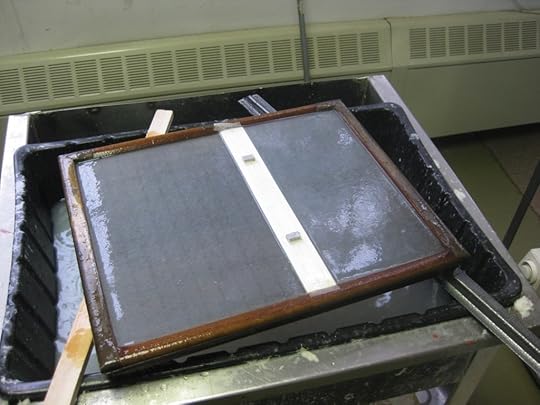The Papermaker’s Wet Floor
I guess I’ve been spoiled when it comes to worrying about water when making paper. Until my current studio that is. My last two studios were in garages with concrete floors that were graded, so the water conveniently flowed outside into nearby drains. When I moved into my current studio in November (located in Red Cliff, CO), it was carpeted. I removed the carpet, hoping there was concrete underneath, but alas, it is some sort of particle board.

Removing the carpet.
After talking with several people about various options for impermeable flooring, I decided to paint over the wood, since this isn’t my permanent space. I put down three coats of porch paint.

The painted floor.
It is holding up fairly well, but there is another issue: keeping as much water as possible from hitting the floor because cleaning it up is a pain!
My first task was to figure out how to get a hose onto the little sink (the studio is an old school room in a school house, so the sink is kid-size). After one long trip to Home Depot and two trips to Ace Hardware, I found what I needed – a series of adapters. I sealed the connection with some plumbers tape and was good to go.

The studio sink.
I have a nozzle on the other end, so I can take the water where I need it: to wet felts, clean buckets or fill vats with water. I’d like to put a splitter on the faucet so that I could have the hose and the sink, but the sink isn’t big enough to catch the water from the splitter (luckily, there is a utility sink in a nearby hallway).

I’ve had to adapt my vats slightly to prevent water from spilling onto the floor when I’m pulling sheets. I nest a smaller vat inside of a larger one and lay these “sticks” across the vat to hold the mould as each sheet of paper drains (don’t ask me why, but I haven’t managed to remember to get two matching pieces of wood when at the hardware store).

This sheet drainage method also means that the excess water drains back into the vat, which saves a bit of water.

I found these boot trays, which collect water that drips from my couching stand.

And I move one of them underneath my press accompanied by two cement mixing tubs in the front and back which collect most of the press water.

Any excess water and inevitable spills get cleaned up with the wet vac.

I know there are a multitude of methods for keeping water in its place and for saving water. What are you techniques? Please share them as a comment below.
My DVD, The Papermaker’s Studio Guide, is a new resource featuring: how-to tips on setting up a professional papermaking studio; multiple ways to process pulp, form sheets, and utilize diverse pressing and drying techniques; and a range of unique papermaking techniques such as pulp painting, watermarking and working sculpturally with paper pulp.
Watch the trailer and order your copy today!



